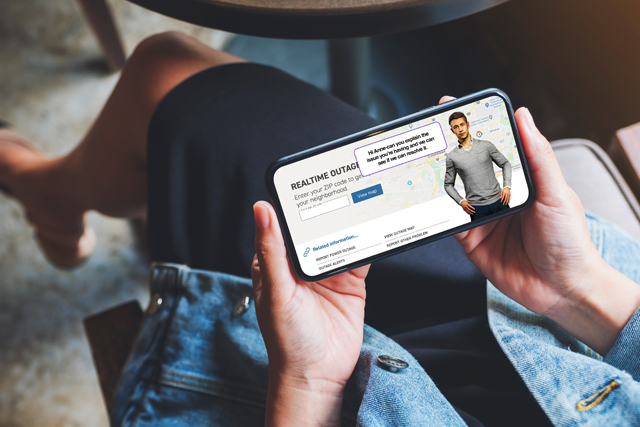AI in the Workforce: Stop Asking If It Will Take Your Job—Ask How It Can Make Your Job Better
By Michelle Collins, Chief Revenue Officer
Here’s the thing about the “Will AI take my job?” conversation: we’re asking the wrong question.
It’s like asking whether a calculator will replace an accountant. Sure, it handles the arithmetic, but that just means the accountant can focus on analyzing trends, advising clients, and making strategic recommendations instead of adding up columns of numbers all day.
The real question isn’t whether AI will replace workers—it’s whether we’re smart enough to deploy it in ways that actually help people do their jobs better.
The Problem Isn’t Too Many Workers—It’s Too Much Busywork
Walk into any hospital and ask a nurse how they spend their day. You’ll hear about medication schedules, patient documentation, insurance paperwork, inventory tracking, and a dozen other administrative tasks that eat up time they’d rather spend with patients.
Same goes for teachers drowning in grading and lesson planning, or customer service reps copy-pasting the same responses to similar questions for the hundredth time this week.
We don’t have a people problem. We have a process problem. And that’s exactly where AI can make a real difference—not by replacing the nurse, teacher, or service rep, but by handling the stuff that keeps them from doing what they’re actually good at.
Two Kinds of AI: Procedural vs. Agentic
Not all AI is created equal, and understanding the difference matters when we talk about workforce impact.
Most AI tools today are procedural—they follow predetermined steps to get predictable results. Customer service chatbots that route inquiries based on keywords. Email filters that sort messages into folders. Document processing systems that extract data from forms. Useful? Absolutely. Revolutionary? Not really.
But then there’s agentic AI. These systems can adapt, make decisions, and change course when things don’t go as planned. They have goals, not just instructions.
Here’s a concrete example: Instead of a chatbot that can only answer pre-programmed questions, imagine an AI assistant that can research a customer’s specific issue, pull relevant information from multiple sources, draft a personalized response, and escalate to a human when the situation requires it.
The procedural approach supplements human work. The agentic approach can genuinely transform it.
Where AI Actually Helps (And Where It Doesn’t)
AI excels at:
- Processing massive amounts of information quickly
- Spotting patterns humans might miss
- Handling repetitive tasks consistently
- Working 24/7 without breaks
- Scaling responses to match demand
AI struggles with:
- Reading between the lines in complex human situations
- Making ethical judgments in gray areas
- Building trust and rapport
- Handling genuine emergencies that require improvisation
- Understanding cultural context and unspoken rules
The key is designing systems that play to AI’s strengths while preserving space for human judgment, creativity, and connection.
Real-World Augmentation That Actually Works
Let’s get specific about what this looks like in practice:
Healthcare: An AI system that monitors patient vitals, flags concerning trends, and prepares relevant information for the doctor’s review. The doctor still makes the diagnosis and treatment decisions, but they’re working with better, more organized information.
Education: An AI tutor that identifies which students are struggling with specific concepts and suggests targeted exercises, freeing up the teacher to provide personalized guidance and support where it’s needed most.
Customer Service: An AI agent that handles routine inquiries and gathers detailed context for complex issues before routing them to human representatives who can focus on problem-solving rather than information gathering.
Notice what these examples have in common? The AI handles the legwork so humans can focus on the parts of their jobs that require judgment, empathy, and expertise.
The Ethics Aren’t Optional
Here’s where things get serious: augmentation only works if it’s built with clear boundaries and ethical guardrails.
That means AI systems that:
- Clearly identify themselves as AI (no pretending to be human)
- Know when to hand off to a person
- Protect user privacy and data
- Can explain their reasoning when asked
- Are designed with input from the workers who will actually use them
We’ve all interacted with poorly designed AI that makes work harder—chatbots that can’t understand simple requests, voice systems that force you through endless menus, automation that creates more problems than it solves.
The difference between helpful AI and frustrating AI comes down to whether it was designed with real users and real workflows in mind.
What This Means for Your Industry
Let’s be honest: some jobs will disappear. Basic data entry roles, simple customer service positions, routine processing work—these are increasingly being automated away. That’s not necessarily bad, but it’s real, and we need to acknowledge it.
The companies getting AI augmentation right are focusing on making their remaining workforce more effective rather than just cutting headcount. But that’s a choice, not an inevitability.

